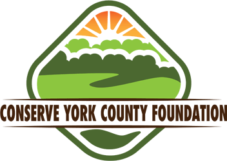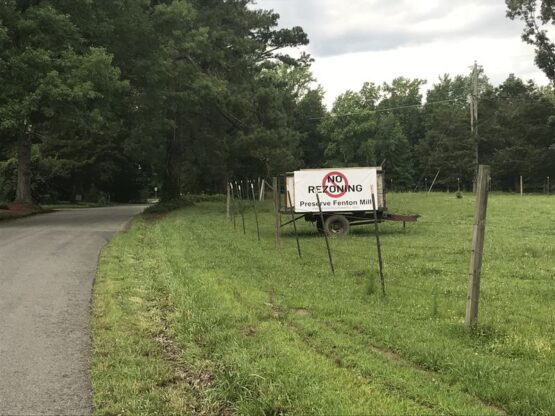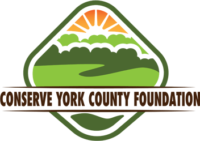As the crews on Interstate 64 work on widening an 8 mile, upper York County stretch of Hampton Roads’ main highway connection west, one of the Peninsula’s few rural corners is becoming a development hot spot.
Crews are clearing ground off Waller Mill road, on the Carr’s Hill Tract that Colonial Williamsburg sold earlier this year, reviving the notion, first approved 13 years ago, that site of the 18th century Benjamin Powell Plantation would be a good place for 300-plus single family homes.
Three miles to the north, different developers led by Lamont Myers last year bought more than 370 acres from Williamsburg Pottery and some of its neighbors off Barlow Road, and are seeking permission for a development with 506 single-family houses, 230 townhouses and 100 age-restricted “active adult” units, along with 40,000 square feet of commercial space.
Two miles east of where Myers and his group want to build their Fenton Mill development, near the western end of Lightfoot Road, Stanley Martin Homes plans 32 townhomes, along with 204 apartments and 20,000 square feet of retail space.
“We’re part of the Historic Triangle, part of a region that depends on tourism, and part of the reason people come here is our natural beauty,” said Darci Tucker, one of the leaders of the informal, several-hundred-strong group opposing the Fenton Mill project.
“We’d really like to see this whole region slow down,” she said.
Myers believes his project is a thoughtful way to meet strong demand for housing in York County while protecting the upper county’s quality of life.
“I think they’re reacting to all the development that’s gone before,” he said. “There’s no way by anyone’s standard that this is a high density development.”
From Myers’ point of view, the timing is good — the widening of I-64 mean the upper county’s connections to the rest of Hampton Roads will be a lot easier. He doesn’t seem to be alone.
“There’s a lot of interest in the north county, probably more than we’ve seen in at least a decade,” said County Administrator Neil Morgan.
Besides I-64, Morgan said low interest rates make financing the multimillion-dollar investments much more affordable. He also thinks what has been a fairly strong Historic Triangle economy — battered though it has been in the past few months by a coronavirus-sparked slump in tourism — means a county that’s long been a bedroom community for Newport News and Hampton is about to play that same role in greater Williamsburg.
But the big reason, he said, is more simple:
“There happens to be land, when there’s not a lot of developable open land left in Hampton Roads,” he said.
That’s also what bothers critics who already live in the upper county. Residents who’ve long dealt with long drives on barely-two-lane country roads to get to work, shops and school because they like the quiet and the thick green woodlands of the upper county aren’t happy. For county officials, the rising interest in large residential projects is challenging a lot of conventional thinking about economic development generally.
Most of the houses that edge the Fenton Mill site sport orange “No Rezoning” signs — to build the development the way Myers envisages requires a rezoning. Currently, only single family homes on lots of at least one acre are allowed. His consultants estimate that would allow construction of 290 homes.
But rezoning opens up a much more elaborate review process, including public hearings and formal votes by both the Planning Commission and Board of Supervisors, than would a project like the Powell Plantation plan on Waller Mill Road, Morgan said.
There, zoning already allows the number of homes — 326 — that Harrison and Lear said it plans to build. The main issues will be street layout, adequacy of water and sewer facilities and issuing permits and inspecting the houses as they are built, Morgan said.
Because rezoning opens a formal door for neighbors to speak up, neighbors of the Fenton Mill site have organized themselves to speak in opposition. Earlier this month, more than 30 linked up with a county Comprehensive Plan Steering Committee online meeting to voice their concerns. They’ve met with the developer last week, and held six “listening sessions” in area parks, typically with about 50 people showing up and managing to maintain social distancing.
The opponents think a quiet, fairly rural part of the Peninsula is on the verge of becoming suburban sprawl.
“I have a horse farm on four acres, my neighbors have 4- to 7-acre lots, we moved here to live in the country,” said Tom Chamberlain, who has lived for two decades across Barlow Road from the woods where Fenton Mill is proposed.
“Look across Newman Road where there are people who moved there in the ′60s and ′70s wanting the rural life, and see all the development there now,” he said. One road into Fenton Mill would intersect with Newman and add to traffic on what’s already a busy road that connects with the I-64 exit for Humelsine Parkway.
Two other proposed roads would tie into Barlow, where Tucker fears the additional traffic would be a challenge for the neighborhoods off nearby Skimino and Carters’ Neck roads. Fenton Mill Road, running along the southern edge of the tract and part of Barlow are often jammed with weekend beach traffic when drivers try to dodge accidents and backups on I-64.
“You’ve got the apartments on Lightfoot, retail nearby; they do traffic studies that say this will add X to the traffic, this other will add X, but nobody’s looking at what X plus X plus X is going to mean,” Chamberlain said.
The developers say their homes, priced at $250,000 to $600,000 and averaging $370,000, along with the commercial space, represent a more than $300 million investment in York County. That would generate some $1.3 million in taxes, the developers’ zoning application says — that’s equivalent to a 2% increase in the county’s real estate tax collections and is nearly as much as it collects from hotel taxes, a vital source for a tourism-dependent locality.
Opponents think that will be irresistible for county officials, whom they believe have already worked too closely with the developers and are too reliant on data the developer presented.
“I’m really concerned we’re not hearing back from elected officials when we call,” Tucker said. “The developer seems to have a lot of access.”
But there’s no decision one way or the other, Morgan said. It’s still early in the process, and this one is coming at a time when the coronavirus makes it much harder to set up some of the usual community meetings at which developers and neighbors sometimes hammer out their differences.
It’s usual in the early stages of the process for the developer and county staff to talk about an idea, to see what kinds of challenges it might present, he added.
And while no county official can afford to ignore revenue questions — or, for that matter, the costs that come when populations increase — tax collections aren’t really an issue, Morgan said.
“We’re the lowest-tax full service local government in Hampton Roads,” he said. “We don’t need to chase development to make payroll ...
“Economic development used to be jobs and taxes, jobs and taxes. But I think now it’s really about place-making,” he added.
Yorktown’s waterfront is an example. The county spent more than $23 million replenishing beach, building a pier, making the walkway and erecting retail space. It signed a $200,000 10-year year lease for the restaurant space in 2013 and collects about $50,000 a year in boat fees — and spends more than that paying off the money it borrowed for the project and maintaining the spot.
“You can make an argument about the impact on property values, on businesses,” Morgan said, but the point is that riverfront “now is the community’s living living room” — an investment in the county’s quality of life, and quality of life is the real point of economic development, in his view.
Place-making is one big change in thinking about economic development. Another is the old saw that local governments need to balance residential development — which comes with big expenses for schools, police, fire and other public services — with commercial projects, which bring tax revenue and smaller costs.
“Where would the balancing come? Not really from retail, by and large. Not really office space, by and large, Not really industrial — do you want industry in the middle of a residential community?” Morgan said.
The county’s two best sites for industry are already a financial headache. Tax revenue from the old Yorktown refinery is way down since it shut down operations and basically turned into a fuel farm. Dominion Energy is dismantling two of the three power generators at its Yorktown station, and the third is set for the chopping block shortly.
“There’s already a lot of vacant retail and vacant office space in Hampton Roads,” while a shift, possibly permanent, to more remote working sparked by the coronavirus and the continuing growth of Internet commerce hang over those sectors, he said.
But interest in residential development is strong.
“The Upper York/Williamsburg area is one of the most desirable places to live on the Hampton Roads Peninsula, yet lacks the needed new housing to keep up with demand,” said Hunter Taylor, area division president of Stanley Martin Homes, which is planning the townhome project off Lightfoot Road.
The company’s interest has been heightened by the county’s 2005 projection that its population would exceed 76,000 by 2025. That would represent a roughly 12% increase from last year’s total. A recent Long and Foster market survey found the county’s inventory of homes for sale as of last month was down by 44% from last year’s level.
Morgan doesn’t think questions about development are going to go away — and he’s hoping the process will result in an agreement.
“You want to see where there’s overlap. On the one side, there’s the values that neighbors have; what they want to live with; there’s the developer, and what he can afford and can do; you hope there’s a place on the Venn diagram where those overlap,” he said.
“Then there’s the county, and wanting a neighborhood that has a quality of life in the long term ... You hope that where all that intersects there’s a sweet spot ... if there’s not, everyone goes back in their corners, and you maybe get what’s possible by right.”


